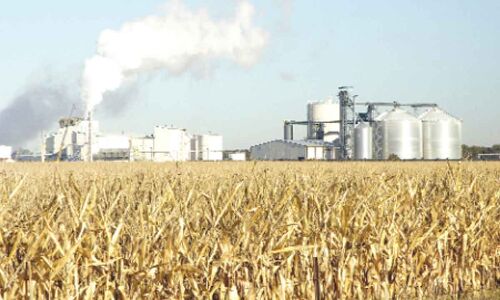Ethanol: Why it matters?

India beats 10% ethanol blending target, aims for 20% ethanol blended petrol
Ramakrishna YB, a member expert of the working group on bio fuels, Ministry of Petroleum and Natural Gas, said: "It is heartening to note that India has achieved the 10 per cent ethanol blending target in petrol in May 2022, seven months ahead of the target date. This development comes as a boon to the sugar industry who were bogged down with excess sugar production, unattractive domestic and international prices and accumulated dues to sugarcane growers."
On the back of this announcement, Ramakrishna said, "The government of India took a decision to shift the bio fuel program from Ministry of New and Renewable Energy to Ministry of Petroleum and Natural gas in early 2018. MoP&NG soon came up with a new national policy on bio fuel 2018. The policy aims to utilize, develop and promote domestic feedstock for the production of bio fuels thereby increasingly substitute fossil fuels and contributing to energy security. It also aims at climate change mitigation apart from employment generation in a sustainable way." The goal of the policy was to achieve about 20 per cent blending of ethanol in petrol and about 5 per cent blending of bio diesel in diesel by 2030.
The new policy now allows ethanol production from - molasses, sugar cane juice, sugar syrup, crops such as sugar beet, sweet sorghum, corn, cassava, rotten potatoes and surplus and rotten food grains unfit for human consumption.
Sugar mills while balancing the sugar production to ensure meeting domestic demands, started building additional distillery capacity and fully utilizing the under-utilized capacities. Broad basing the feedstocks for first generation ethanol also resulted in investment decisions to set up several hundred of gain based standalone distilleries," he added.
Ramakrishna also stated that "government of India policies coupled with the overwhelming response from the sugar industry, independent distilleries and not in the least aggressive blending program by OMCs has today resulted in achieving the 10 per cent blending target 7 months ahead of the target date. All the new initiatives are expected to help reach more than 15 billion liters per annum of first-generation ethanol by 2025. The commitment demonstrated by all the stakeholders has given the confidence to the government of India to advance the 20 per cent blending target from 2030 to 2025. With 10 per cent blending target achieved in May 2022, India enters into the league of three nations to have achieved this milestone besides Brazil and United States of America."
The impact to fuel economy varies depending on the energy difference in the blend used. For example, E85 that contains 83 per cent ethanol content has about 27 per cent less energy per gallon than gasoline (the impact to fuel economy lessens as ethanol content decreases). Engines in gasoline vehicles, including flexible-fuel vehicles (FFVs), are optimized for gasoline. If they were optimized to run on higher ethanol blends, fuel economy would likely increase as a result of increased engine efficiency.
Ethanol also has a higher octane number than gasoline, which provides increased power and performance. For example, Indianapolis 500 drivers often fuel their race cars with E98 because of its high octane. Several projects currently under way, including the co-optimization of fuels and engines initiative, seek to understand the potential for improving engine efficiency through the use of ethanol blends and other high-octane biofuels.
The carbon dioxide released by a vehicle when ethanol is burned is offset by the carbon dioxide captured when the feedstock crops are grown to produce ethanol. This differs from gasoline and diesel, which are refined from petroleum extracted from the earth. No emissions are offset when these petroleum products are burned. On a life cycle analysis basis, greenhouse gas (GHG) emissions are reduced on average by 40 per cent with corn-based ethanol produced from dry mills, and range between 88 per cent and 108 per cent if cellulosic feedstocks are used depending on feedstock type, compared with gasoline and diesel production and use.














